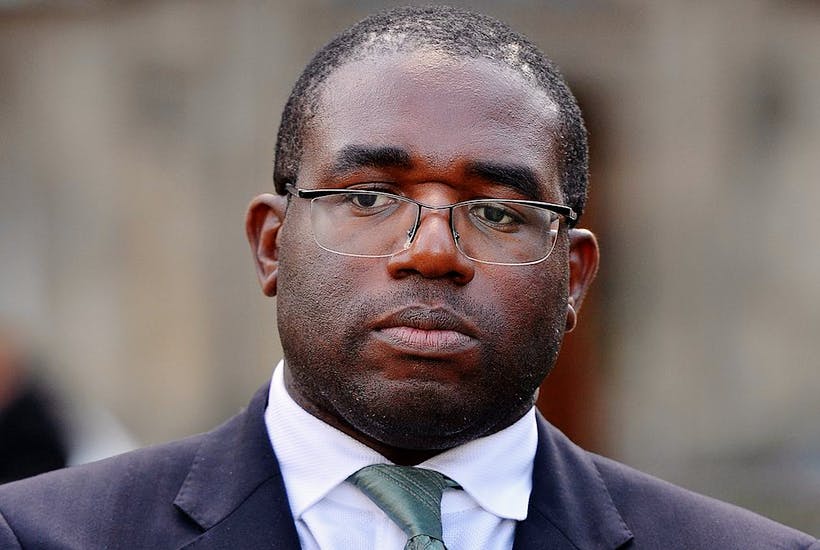David Lammy has been making headlines today, accusing Oxford of ‘social apartheid’ because it offers so few places to black British students. This claim is based on an FOI request Lammy submitted to the university asking how many black British A-level students each college has offered places to in the last six years. The most eye-catching statistic is that 10 out of 32 Oxford colleges did not offer a place to a single black British pupil with A-levels in 2015 and Oriel College has only offered one place to a black British A-level student since 2010.
There is no doubt that Oxford does admit too few black British students, but it is worth pointing out that this data has been sliced and diced to paint the bleakest possible picture. Of the 10 ‘colleges’ that didn’t make any offers to black British applicants in 2015, four are Permanent Private Halls, not full colleges, and admit very few numbers of students, black or white. Another – Harris Manchester – is a former Private Hall and only admits students aged 21 or over.
The picture is marginally better if you look at the data for 2016, with the number of ‘colleges’ in the offending category falling to nine, and better still if you include all black British applicants – not just those doing A-levels. If you include students taking the International Baccalaureate and other post-16 qualifications, Oriel made offers to four black British applicants between 2010 and 2016. Not great, obviously, but better than one.
Do these statistics suggest Oxford is guilty of racial discrimination? Lammy does not come straight out and say that, but he certainly drops some thinly-veiled hints. ‘Difficult questions have to be asked, including whether there is systematic bias inherent in the Oxbridge admissions process that is working against talented young people from ethnic minority backgrounds,’ he says.
That is unfair. Twenty seven per cent of all the students at Oxford – undergraduate and post-graduate, British and overseas – are from BME (Black and Minority Ethnic) backgrounds. If you just look at British domiciled students admitted to the university as undergraduates in 2016, that figure falls to 15.9 per cent, but that’s still pretty respectable given that only 13 per cent of the UK population is BME. The fact that Oxford is now admitting so many BME students, and that the percentage of students it’s admitting from state schools is trending upwards, is not surprising given that the university spends millions of pounds a year on widening participation, and millions more on financial aid for students from disadvantaged backgrounds.
It is true that the acceptance rate for applicants for undergraduate places is lower for BME students than it is for white students – 16 per cent and 24 per cent respectively – but that isn’t because the university is guilty of ‘systematic bias’. Rather, it is because BME students apply in disproportionately large numbers for the university’s most popular courses – Economics and Management, Medicine, PPE, Law and Maths. If you factor in the lower acceptance rates for those subjects across the board (only seven per cent in Economics and Management, for instance), that explains most of the discrepancy.
As I have written before, the reason there are so few black British undergraduates at Oxford is because so few apply. In 2016, Oxford received 12,193 applications from students domiciled in the UK, of which 328 were black British. (Of those, 54 were offered places and 34 got in.) Why so few applicants? Because not enough black students are getting the three As at A-level they need to stand a realistic chance of securing a place. If you want to boost the number of applicants you need to increase the number of black British students meeting that standard and the way to do that is to improve post-16 education, particularly in urban areas.
A sixth form which is pointing the way is the LAE (London Academy of Excellence), a free school in Newham. LAE was set up by a consortium of independent schools and opened in 2012. Since then, it has been sending large numbers of BME students to top universities, including Oxford and Cambridge. This year it sent 148 pupils to Russell Group universities, with 15 going to Oxbridge. The majority of these students are BME.
David Lammy is right to draw attention to the low numbers of black British students at Oxford. But he is pointing his finger in the wrong place. The fault does not lie with Oxford, which really isn’t guilty of ‘systematic bias’, but with our schools. If he wants to boost those numbers he should be calling for more free schools like LAE – and I’m happy to report that a second LAE has just opened in Tottenham in David Lammy’s constituency. If we can set up an LAE or similar in every city in England, the number of black British students at Oxford will increase significantly.







Comments